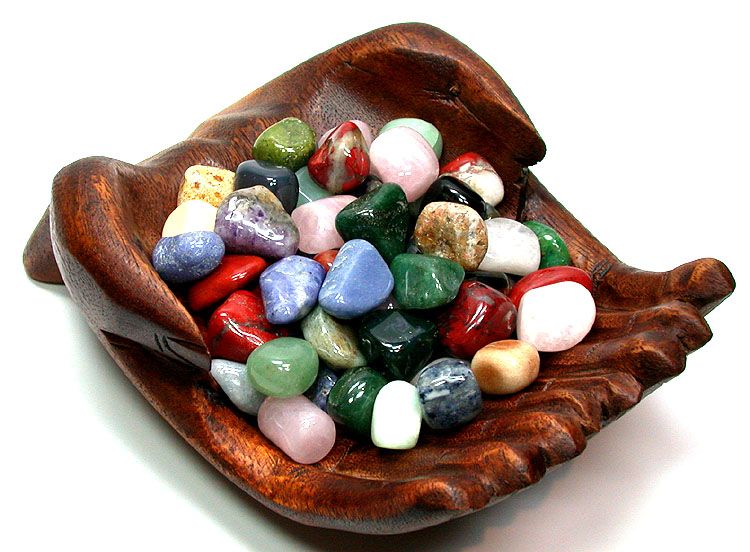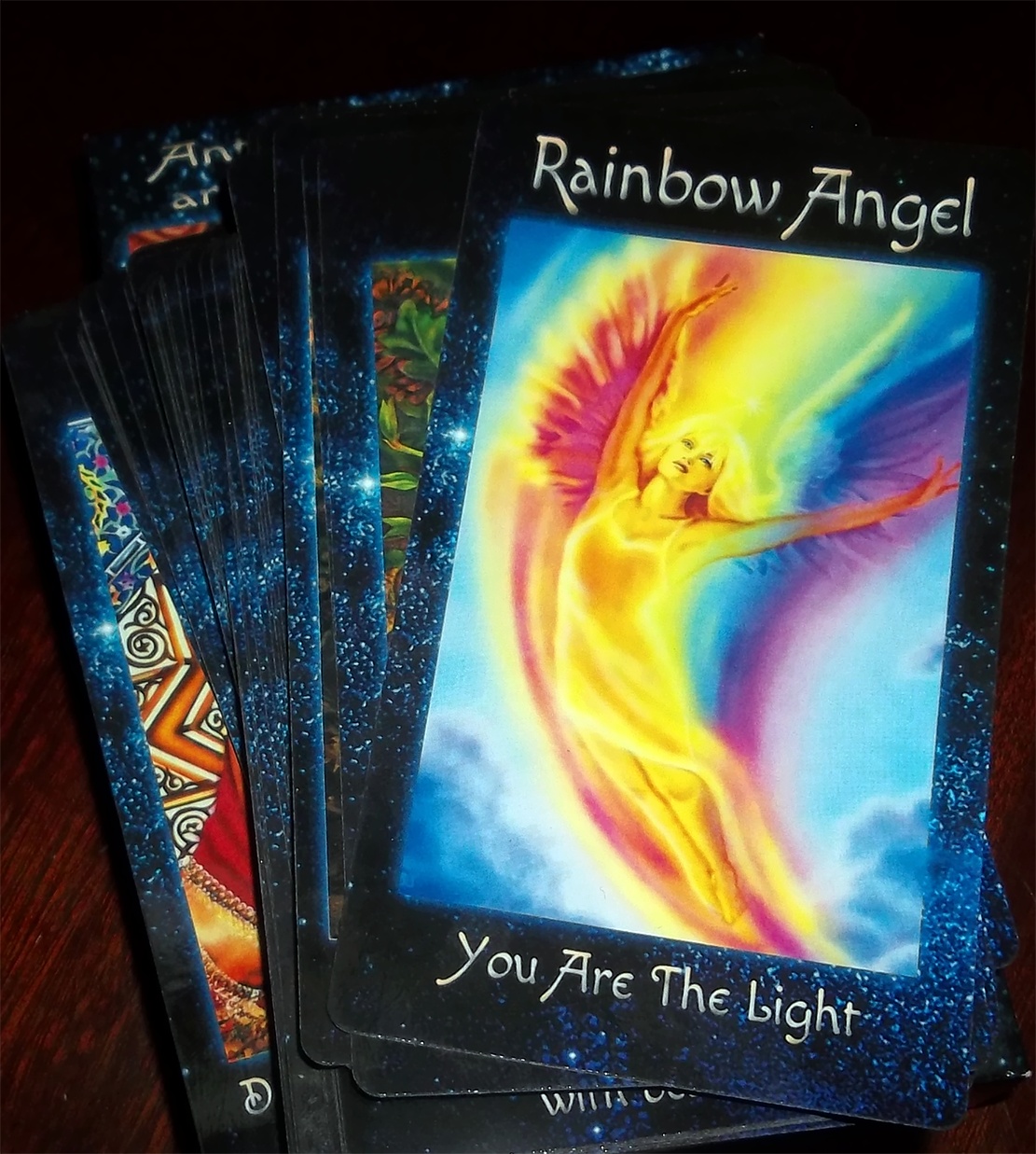Lyrid Meteor Shower - 2017
- Details
- Written by AndEl
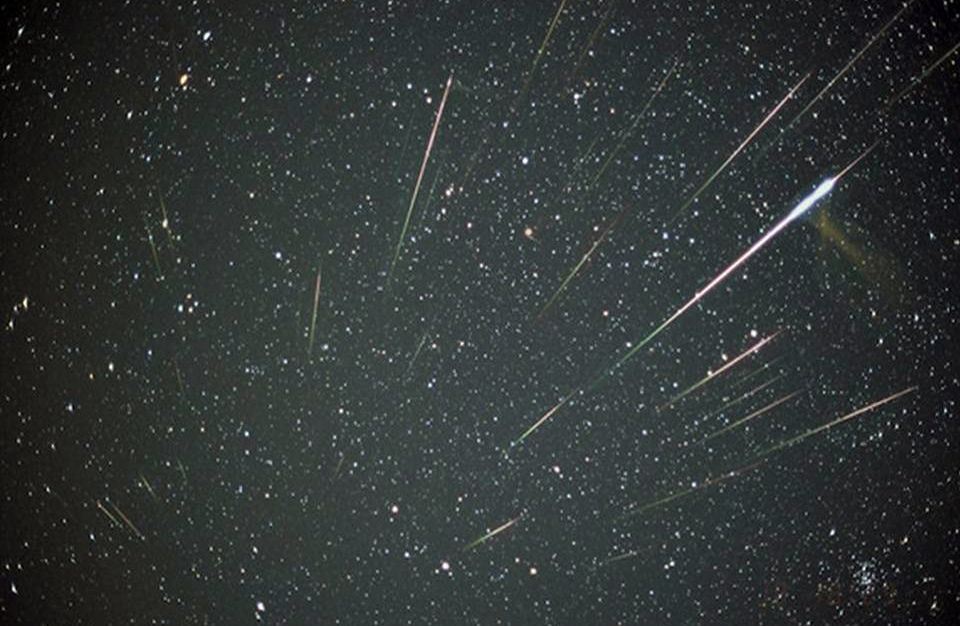
April 22 is the likely peak morning. Try April 21 and 23 as well. For this year’s Lyrid meteor shower, the moon is out of the way!
The annual Lyrid meteor shower has started! It’s active each year from about April 16 to 25. In 2017, the peak of this shower – which tends to come in a burst and usually lasts for less than a day – is expected to fall on the morning of April 22, with little or no interference from the slender waning crescent moon. The greatest number of meteors usually fall during the few hours before dawn. All in all the Lyrid meteor shower prospects look pretty good for 2017, though meteor showers are notorious for their fickle and not totally predictable nature! Follow the links below to learn more about April’s shooting stars!
How many Lyrids meteors can I expect to see in 2017? You might spot a Lyrid meteor anytime during the shower (April 16-25), but the most meteors will probably fall in the dark hours before dawn on April 22. It’s always a good practice to watch on the mornings around the peak as well. In a moonless sky, you might see from about 10 to 20 Lyrid meteors an hour at the shower’s peak. This year, in 2017, the slender waning crescent moon shouldn’t pose too much of a problem.
Of course, meteor showers are notorious for defying the most careful predictions. The Lyrids stand as no exception. An outburst of Lyrid meteors is always a possibility (though no Lyrid outburst is predicted for 2017).
For instance, American observers saw an outburst of nearly 100 Lyrid meteors per hour in 1982. Around 100 meteors per hour were seen in Greece in 1922 and from Japan in 1945.
By the way, if you do see a meteor … notice whether it leaves a persistent train – that is, an ionized gas trail that glows for a few seconds after the meteor has passed. About a quarter of Lyrid meteors do leave persistent trains.
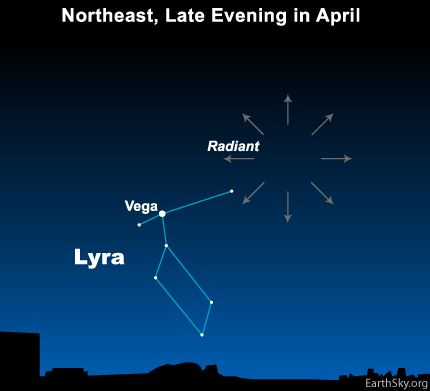
Where is the radiant point for the Lyrid meteor shower? If you trace the paths of all the Lyrid meteors backward, they seem to radiate from the constellation Lyra the Harp, near the brilliant star Vega. This is only a chance alignment, for these meteors burn up in the atmosphere about 100 kilometers – or 60 miles – up. Meanwhile, Vega lies trillions of times farther away at 25 light-years. Yet it’s from Vega’s constellation Lyra that the Lyrid meteor shower takes its name.
You don’t need to identify Vega or its constellation Lyra in order to watch the Lyrid meteor shower. The idea that you must recognize a meteor shower’s radiant point in order to see any meteors is completely false. Any meteors visible the sky often appear unexpectedly, in any and all parts of the sky.
However, knowing the rising time of the radiant point helps you know when the shower is best in your sky. The higher Vega climbs into the sky, the more meteors you’re likely to see. Be aware that the star Vega resides quite far north of the celestial equator, so for that reason the Lyrid meteor shower favors the Northern Hemisphere.
Around the Lyrids’ peak, the star Vega rises above your local horizon – in the northeast – around 9 to 10 p.m. local time (that’s the time on your clock, from Northern Hemisphere locations). It climbs upward through the night. By midnight, Vega is high enough in the sky that meteors radiating from her direction streak across your sky.
Just before dawn, Vega and the radiant point shine high overhead. That’s one reason the meteors are always more numerous before dawn.
Lyrid meteors in history. The Lyrid meteor shower has the distinction of being among the oldest of known meteor showers. Records of this shower go back for some 2,700 years.
The ancient Chinese are said to have observed the Lyrid meteors “falling like rain” in the year 687 BC.
That time period in ancient China, by the way, corresponds with what is called the Spring and Autumn Period (about 771 to 476 BC), which tradition associates with the Chinese teacher and philosopher Confucius, one of the first to espouse the principle: “Do not do to others what you do not want done to yourself.” I wonder if Confucius saw any Lyrid meteors …
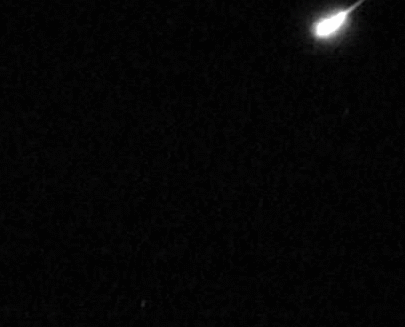
Comet Thatcher is the source of the Lyrid meteors. Every year, in the later part of April, our planet Earth crosses the orbital path of Comet Thatcher (C/1861 G1), of which there are no photographs due to its roughly a 415-year orbit around the sun. Comet Thatcher last visited the inner solar system in 1861, before the photographic process became widespread. This comet isn’t expected to return until the year 2276.
Bits and pieces shed by this comet litter its orbit and bombard the Earth’s upper atmosphere at 177,000 kilometers (110,000 miles) per hour. The vaporizing debris streaks the nighttime with medium-fast Lyrid meteors.
It’s when Earth passes through an unusually thick clump of comet rubble that an elevated number of meteors can be seen.
Bottom line: The Lyrid meteor shower offers 10 to 20 meteors per hour at its peak on a moonless night. The peak numbers are expected to fall on the morning of April 22. Try watching on April 21 and 23, too. In 2017, the light of the waning crescent moon won’t too greatly interfere with the Lyrid shower. In rare instances, Lyrid meteors can bombard the sky with up to nearly 100 meteors per hour. No Lyrid meteor storm is expected this year … but you never know.
Liked this article? Dive deeper into personal growth and wellness! Check out CrystalWind.ca for spiritual wisdom or explore AromaWorx.ca for natural well-being tips. Spread the positivity—share this with friends on their happiness journey!
Let’s Chat! Drop Your Thoughts Below! ![]()
Latest Articles
Dive into the Mystical World of the Crystal Wind Oracle Deck!
Get All the Enchanting Details Now!
NEW Expanded Boxed Edition!
Now with 58 Cards for Richer Wisdom!

Imagine a world of inspiration and healing, free for all—made possible by YOU!
Donate Now—Ignite the Magic at CrystalWind.ca!

Epilepsy - Finding A Cure
Your donation can make a difference!
Help us find a cure – donate now!
Unlock Your Light: Join Lightworkers Worldwide on CrystalWind.ca!
Articles: The Founders
Articles: Cosmic Neighbours
Articles: Galactic History
Follow Us!
Featured This Month
Chalcedony
The Stone Of Orators Chalcedony was very popular as a decorative stone in ant... Read more
Cancer Mythology
The Mythology of Cancer: A Celestial Tale of Loyalty and Sacrifice Among th... Read more
Sun in Cancer
Cancer Sun Sign Characteristics Overview The name "Cancer" comes from Latin, ... Read more
Abalone Shell
Echos Of The Ancestors Abalone strengthens the structure of the body and th... Read more
Egyptian Zodiac/Astrology
Egyptian astrology was one of the earliest forms of astrology. The Egyptians w... Read more
Lammas by The Hedgewitch
Although in the heat of a Mid-western summer it might be difficult to discer... Read more
Lugh - Celtic God Of The Sun
The god Lugh was worshiped in Ireland as a deity of the sun. This connection... Read more



